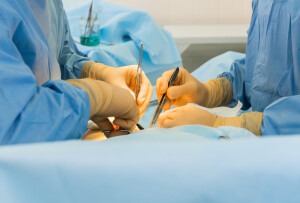 A hip labral tear involves the labrum, which is the ring of cartilage that follows the outside rim of the socket of the hip joint.
A hip labral tear involves the labrum, which is the ring of cartilage that follows the outside rim of the socket of the hip joint.
Apart from providing the hip joint with cushioning, the labrum also acts similar to a gasket or rubber seal holding the ball at the top of the femur (thighbone) securely within the hip socket.
Athletes engaging in sports such as ice hockey, golf, football, soccer, and ballet are at a higher risk of hip labral tear development. A hip labral tear can also develop due to structural abnormalities.
Southern California Hip Institute (SCHI), led by board certified orthopedic surgeon Dr. Tigran Garabekyan, provides orthopedic surgery to patients in Los Angeles, Century City, CA, and surrounding locations.
Symptoms
Many times, hip labral tears do not display any signs or symptoms. However, at times, the patient may experience the following:
- A clicking, locking or catching sensation in the hip joint
- Pain in the groin or hip
- Limited range of motion or stiffness in the hip joint
When to see a Doctor
The patient should consult a doctor if their symptoms worsen or do not improve within six weeks.
Causes
Trauma
A hip labral tear may occur due to an injury to or dislocation of the hip joint which can happen during a car crash or when playing contact sports such as hockey or football.
Structural Abnormalities
Certain people have hip problems since birth. These can become worse with the wear and tear of the joint and lead to a hip labral tear over time.
Repetitive Motions
Wear and tear of the joint may occur due to sports-related and other physical activities as well as pivoting movements which commonly occur in softball or golf. This can eventually cause a hip labral tear.
Diagnosis
The doctor will move the patient’s leg, especially their hip joint, around in different positions to check for pain and assess the hip’s range of motion during a physical exam. They may also want to watch the patient walk.
Imaging Scans
Hip labral tears do not usually occur in isolation. Most patients sustain injuries in other locations in the hip joint as well. X-rays can present clear images of bone. They can help check for broken bones and structural abnormalities.
A magnetic resonance imaging (MRI) can help provide detailed images of the soft tissue of the hip. To better display a labral tear if one exists, a contrast substance may be injected within the hip joint space.
Things to do
The patient may want to create a list including:
- A detailed description of their symptoms
- Information about the health issues they have had
- Details on the family health history of the patient
- All drugs and dietary supplements that they take
- Questions that they may want to ask their doctor
- Expectations from the doctor
During the consultation, the doctor may ask the following questions:
- Where precisely does it hurt?
- When did the pain initiate?
- Did any activity precipitate it?
- Does a specific activity make the pain better or worse?
Prevention
Hip labral tears are usually associated with participation in sports. If the patient engages in a sport that puts significant pressure on their hips, they should condition the muscles surrounding the hips with flexibility and strength exercises.
The patient should avoid loading their hip with their entire body weight when their legs are positioned at the extreme ends of the normal range of motion of their hip.
Board certified orthopedic surgeon Dr. Tigran Garabekyan receives patients from Los Angeles, Century City, CA, and nearby areas for orthopedic surgery.
Dr. Tigran Garabekyan is a board certified orthopedic surgeon specializing in hip preservation. To learn more about Southern California Hip Institute or to schedule a consultation, click here to contact us or call:
Century City / Los Angeles: 310.574.0375
Serving patients in Encino, Sherman Oaks, Van Nuys, North Hollywood, Burbank, Glendale, West Hollywood, Century City, Beverly Hills, Santa Monica, Los Angeles, and other neighboring cities in the greater Los Angeles, California area.
Also visit http://www.drgorthopedics.com/


 Many women experience pelvic pain which can be brought on by various reasons and conditions ranging from endometriosis or fibroids to more severe conditions such as cancer or an ectopic pregnancy.
Many women experience pelvic pain which can be brought on by various reasons and conditions ranging from endometriosis or fibroids to more severe conditions such as cancer or an ectopic pregnancy.  In a hip labral tear, the ring of cartilage (
In a hip labral tear, the ring of cartilage (

 Recovery following
Recovery following
 It is important for an orthopedic surgeon to understand more about a patient’s lifestyle when diagnosing the cause of
It is important for an orthopedic surgeon to understand more about a patient’s lifestyle when diagnosing the cause of  When the
When the  Tendonitis involves the swelling of the tendons. Tendons are thick cords of soft tissue which connect the bone and muscle.
Tendonitis involves the swelling of the tendons. Tendons are thick cords of soft tissue which connect the bone and muscle. 


